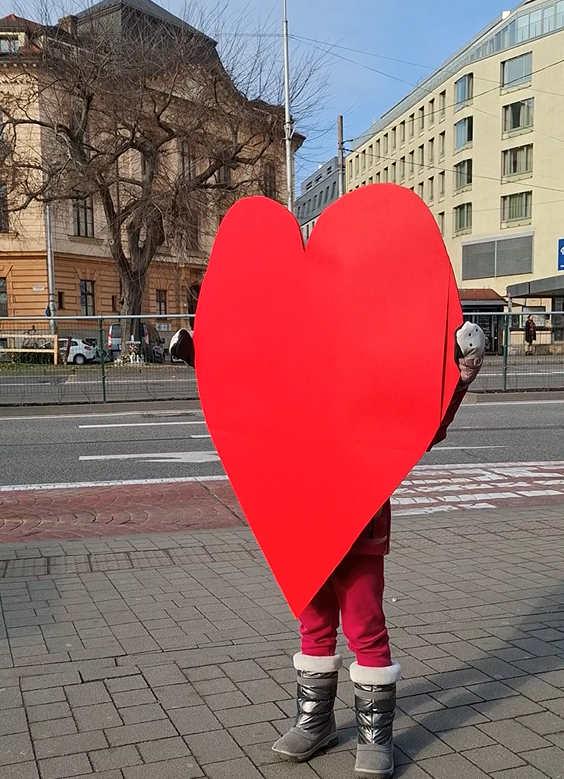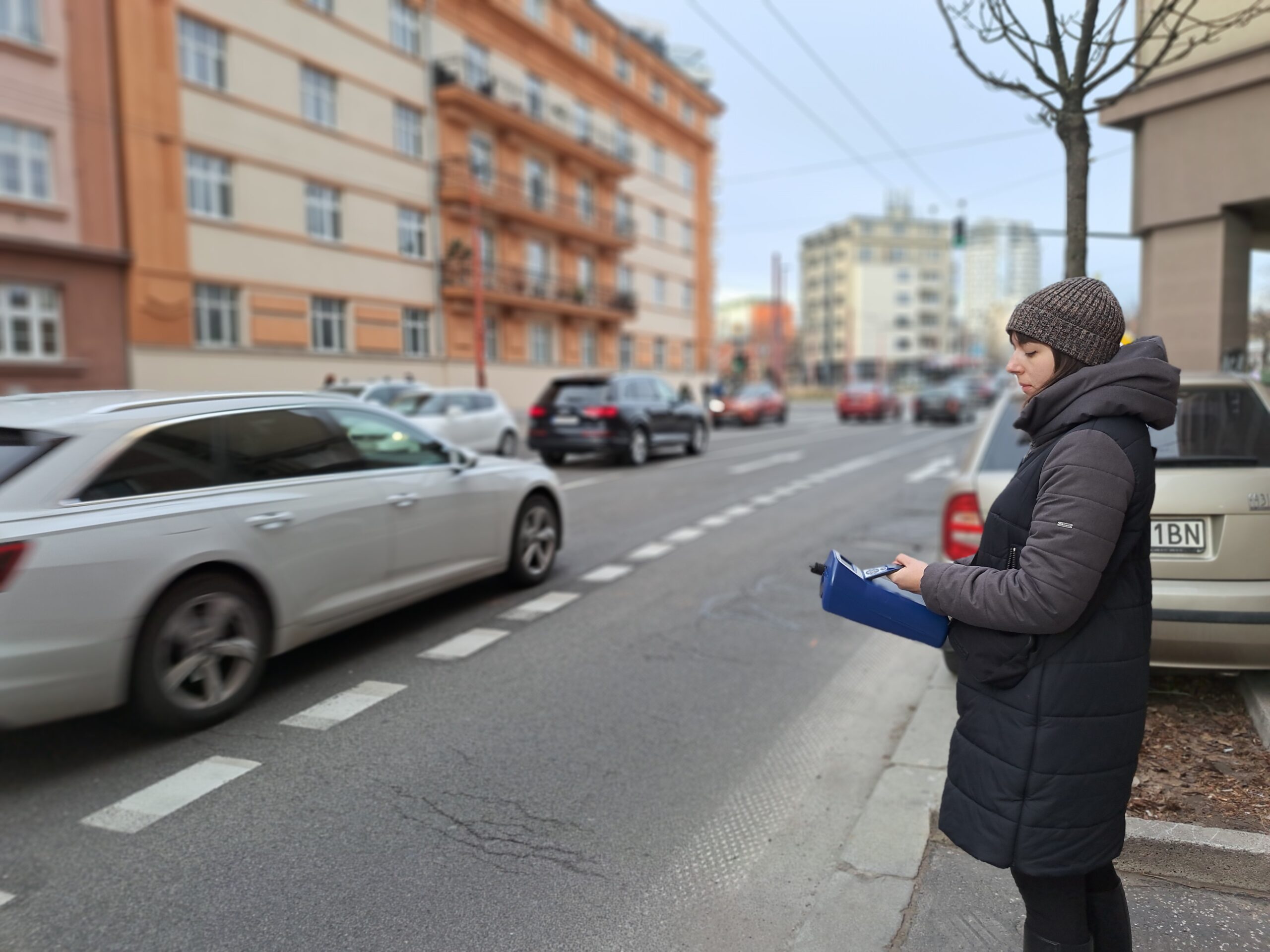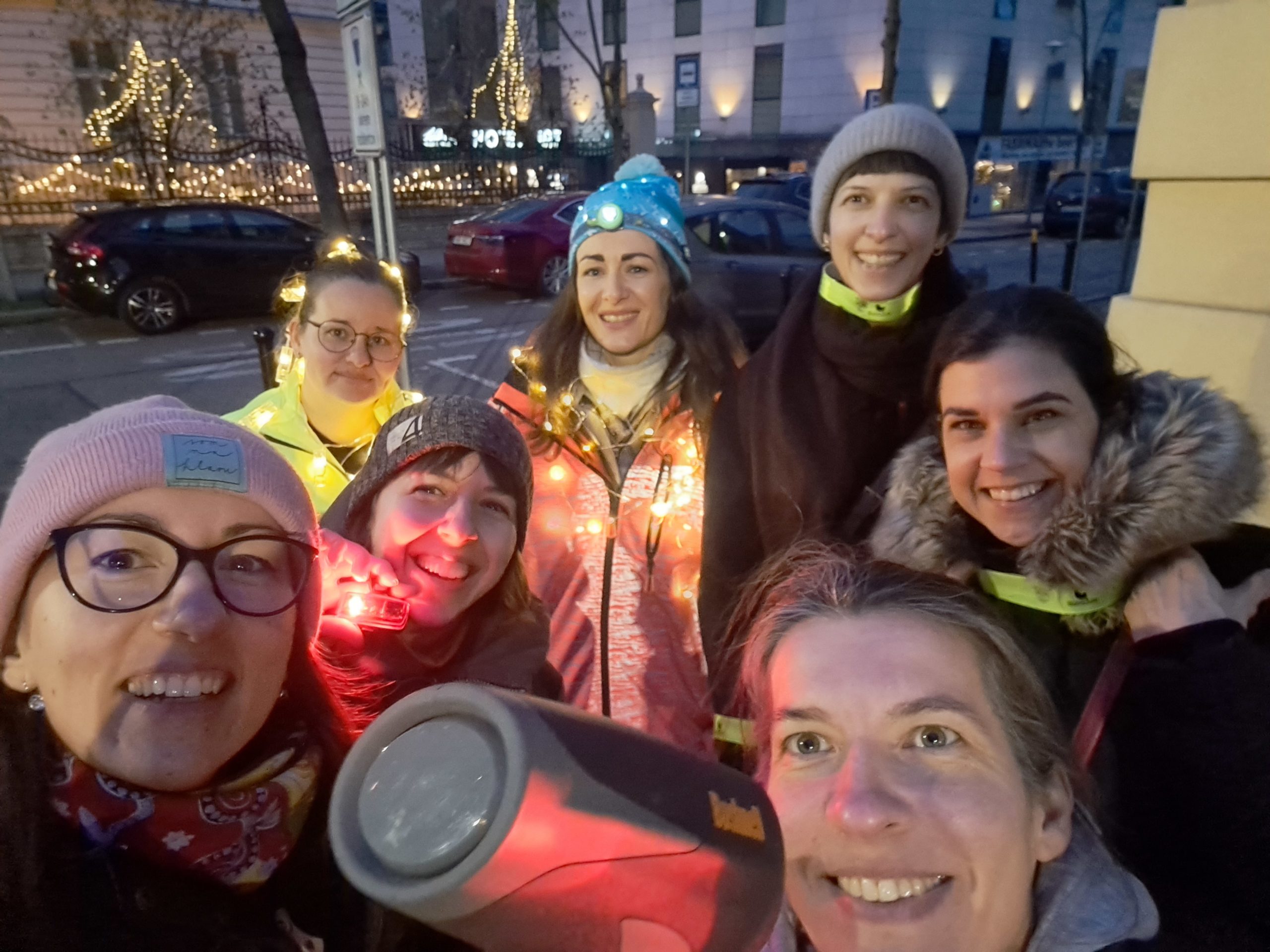
13.5. 2025
We love our children.
We love Bratislava.
We are Concerned Mothers. For 6 years we have been asking Matúš Vallo for solutions to make Bratislava a healthier and more sustainable city. We are asking Mayor Vallo to keep his promises, to implement his action plans and strategic documents.
Where should he start…hmm…. Start with children? OK!
Start with public spaces that are the most polluted, dangerous and unjust – like Mickiewiczova, Staromestská, Štefánikova, and Šancová Street. There are children there too. As mothers, we want a city where it is safe to walk, bike, breathe clean air and where children can grow up independently and happily. But that won’t be possible without courage and consistent decisions from city leadership.
Mayor Vallo has launched a number of beneficial projects and reforms which we appreciated, but all together, during these 7 years he has fulfilled only a very small part of his promises.
In fact, the strategic documents are not being implemented:
In “Plán Bratislava 2030” there is an objective to change the modal split by 2030 – 10% fewer car journeys. It’s 2025 and we are asking, how do they want to achieve this goal?
Cycle routes are unconnected, unmaintained and mostly non-existent. A very few kilometres have been done from the promise of 70 km of safe cycling paths. We don’t see sufficient measures to achieve this – every year there is a “Action plan for the development of cycling and pedestrian transport”, but only about a quarter measures are fulfilled.
How many measures have been fulfilled in past years?
2024: 29 %
2023: 26 %
2022: 25 %
We ask you to step up your efforts.
Due to inflation, the city has increased the price of public transport tickets. Again. However, parking fees are miraculously unaffected by the inflation and are the same price since 2021. Public transport is improving, but will people use it, if they still have the comfort and privilege of multilane roads directly to the centre? Will they change their habits with a parking policy that is way too cheap to discourage driving or buying another car for the family? We value public space so little that residents can park for 10 cents a day. Parking spaces are being painted even on sidewalks, because there is simply no more space to put them.
The situation is dire.
Number of cars in Bratislava is increasing, it is approximately 700 cars per 1 000 inhabitants and the number is growing. It’s twice the ratio that Vienna has. Cars are getting bigger and faster, and we are worried about ourselves and our children. This fear discourages people from walking and cycling. This is then reflected in very poor air quality, sedentary lifestyles, which cause more deaths and health problems in both children and adults, which we must not forget either.
This is the city we are living in. But let’s zoom in a little bit. We have 4 stories for you. The stories are about 4 streets here in the city centre. In case you are in Bratislava for the first time, if you want, you can take a walk to get there, it is just a few minutes from the conference venue. We didn’t pick these streets by chance, these are the most polluted streets in Bratislava.

Last year, together with the Cyklokoalícia and experts from Deutsche Umwelthilfe, we measured air quality – concentrations of nitrogen dioxide (NO₂) and ultra-fine particulate matter on 25 streets – places where we normally go with our children, where they go to school, where we wait for public transport.
We found that the air we breathe contains significantly more pollutants than WHO recommendations allow. Results on many streets are higher than the results at the official monitoring stations.
The worst results were on streets Mickiewiczova, Staromestská, Šancová, Štefánikova – streets that have already been highlighted by the residents themselves in petitions.
We see this as a serious problem; air pollution has an enormous impact on health – and it is children who are most at risk. It causes asthma, exacerbates chronic diseases, increases the risk of cancer and affects the development of children’s lungs and other organs, even their cognitive abilities.
If you are interested in detailed results, you can find them here:

1. A Story About Pollution – Mickiewiczova Street
Mickiewiczova Street functions as a major thoroughfare for private vehicles and buses entering and exiting the centre of the city thus experiences significant environmental stress, particularly in terms of air and noise pollution. The narrow street is bordered by mid-rise buildings on both sides, creating a street canyon. This configuration limits air circulation, allowing pollutants to accumulate rather than disperse. The lack of vegetation and open space further exacerbates poor air quality. Its current state illustrates the consequences of prioritizing motorized traffic over sustainable urban design. As 2000 citizens demanded a few years ago in a petition, this street should be redesigned with a focus on pedestrians, cyclists, and public transport.

2. A Story About Safety and Accessibility – Staromestská Street
Two years ago, our town and the whole of Slovakia was shaken by a tragedy – 5 young students were killed at a bus stop on Staromestská Street by a car driver driving drunk and extremely fast. Traffic accidents are not just about individual responsibility. Accidents can be prevented by systemic measures; we need to change the street design and we need to curb car traffic. Staromestská is an example that our streets cannot be built like expressways where you can speed several times the speed limit. We need to physically modify the streets so that drivers drive slower.
Memorial march, that we organized with Cyklokoalicia:
https://znepokojene.sk/pochod-zochova/

Staromestská Street was built about 50 years ago and cut through Bratislava’s historic center. Now it presents a significant barrier between key urban landmarks and everyday pedestrian movement. Despite its central location – connecting areas such as Bratislava Castle, the Old Town, and the Danube embankment – the street lacks sufficient pedestrian and cycling infrastructure, particularly safe and direct pedestrian crossings. As a heavily visited area by tourists, the current lack of crossings hinders comfortable, intuitive movement. People are forced to use the underpass or make a long detour through the overpass. Check out our video.
In a city that prioritizes walking, it shouldn’t work like this…
Staromestská divides – the pedestrian crossing connects!

As Bratislava has committed to more sustainable and inclusive urban planning – introducing a pedestrian crossing on Staromestská in the area of bus stop Zochova would be a low-cost, high-impact intervention aligned with these goals, contributing public space equity, safety, inclusivity, sustainability, and better urban experience especially for people in wheelchairs, with a stroller, with a bicycle, with crutches, with sore legs or luggage, or people who are afraid to use underpass.

3. A Story About Untapped Potential – Štefánikova Street
Štefánikova Street, stretching from Hodžovo námestie (President’s Palace) toward the main train station, holds strategic importance in Bratislava’s urban structure. With its generous width, historic buildings, and direct connection between key transport and administrative nodes, it has all the spatial and architectural prerequisites to function as a vibrant, people-centered urban boulevard. However, its current role is largely defined by car-dominated infrastructure, making it congested, noisy, and underutilized in terms of public life and aesthetic value.
Štefánikova Street has the potential to become one of Bratislava’s most prestigious and enjoyable public spaces. With proper reallocation of space—such as reducing the number of car lanes, introducing protected bike paths, planting trees, and expanding pedestrian areas—it could transform into a multifunctional boulevard prioritizing people, not cars.
How to cross this street in a safe manner? Put on Christmas lights and all the Hi-viz that you have! We tried it, but of course it did not work, take a look 🙂


4. A Story About Priorities – Šancová Street
Šancová Street is one of the busiest and most important urban corridors in Bratislava. Despite its central role in the city’s transport system, its current state reflects an outdated, car-centric model of urban mobility. Dominated by multiple lanes of fast-moving traffic, limited pedestrian infrastructure, and no cycling facilities, Šancová today is a hostile environment for anyone not traveling by car. Despite the street’s residential density and proximity to schools, shops, and services, pedestrians must navigate long distances between safe crossings. Additional, well-placed pedestrian crossings would improve walkability, safety, and accessibility for everyone.
In 2023, we initiated a petition signed by over 3,600 citizens, that called for a comprehensive redesign of Šancová Street, advocating for dedicated bus lanes, safe cycling infrastructure, more pedestrian crossings, increased greenery, and safer intersections. Even after 2 years, no improvements in safety have occurred.
Šancová has the spatial potential to accommodate a multimodal redesign. It is wide enough to reallocate space from general traffic lanes to public transport, cycling, and greenery – without compromising its transport function. What’s lacking is not technical feasibility, but political will and prioritization of public interest over traffic flow.
The petition with thousands of signatures underscores that we citizens are no longer satisfied with streets that serve only cars. There is a clear demand for a healthier, more inclusive, and environmentally sustainable urban environment. Addressing these concerns would not only improve daily life for thousands of residents but also align Bratislava with broader European trends in sustainable urban mobility and climate adaptation.


Bratislava needs a comprehensive sustainable mobility plan. We are calling for measures to reduce the number of cars, introduce 30 zones, prioritise walking, expand cycling infrastructure, improve public transport, regulate transit and parking more strictly, and more. We can take inspiration from solutions already working abroad. These are concrete things we need to protect the health of our children – to make Bratislava a city where quality of life is more important than cars.
WHAT KIND OF CITY WOULD MEET OUR REQUIREMENTS?
One that really considers sustainable forms of mobility as a priority.
One that wants to become climate neutral.
One that wants to improve quality of life.
One that wants to protect vulnerable groups such as children, women, and the elderly.
Thank you for reading. Enjoy the rest of the conference.
